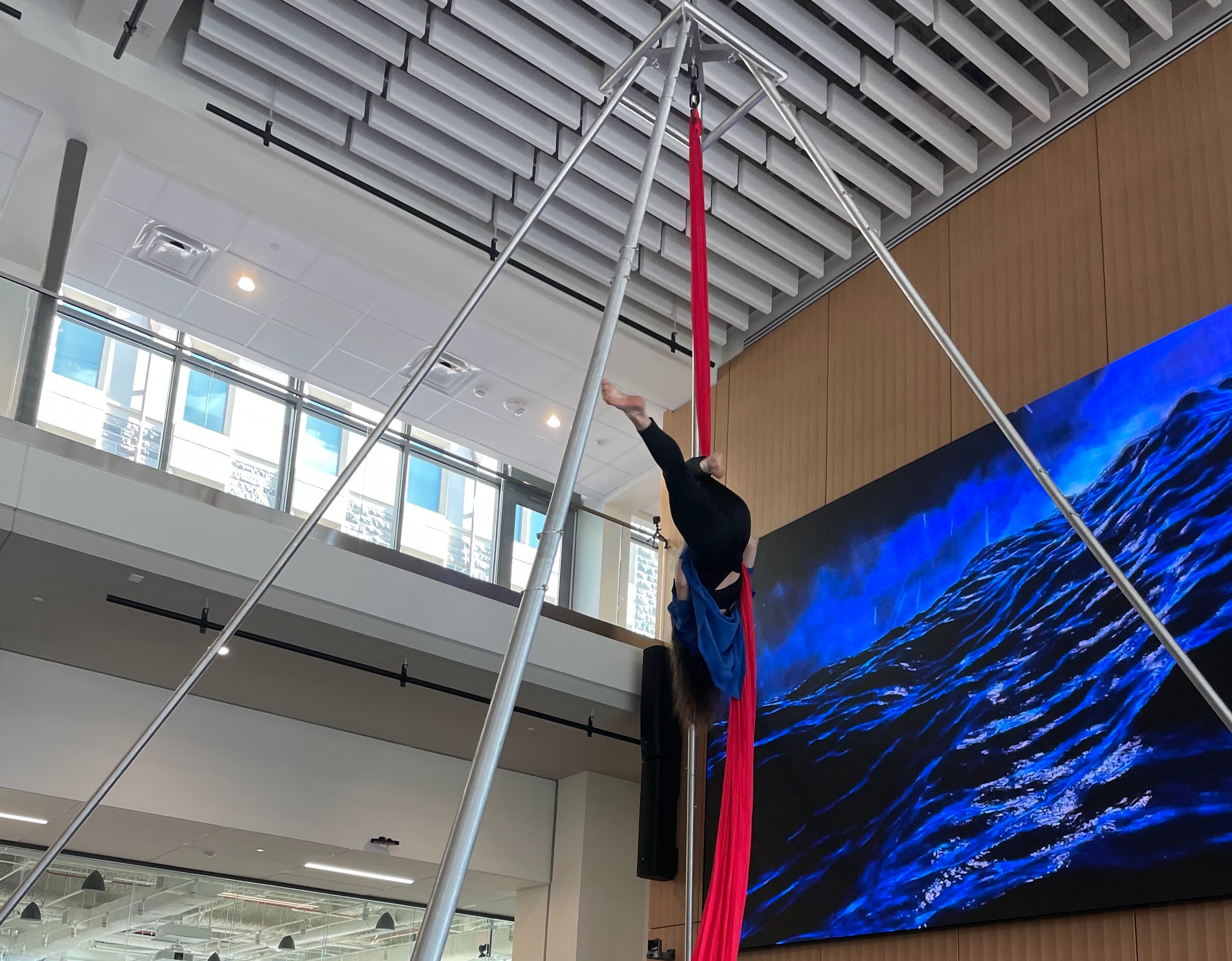The Urgent Marvels of Coastal Science: An Aerial Performance on North Atlantic Climate Change Impacts
October 6, 2022

The North Carolina coastline on an October afternoon: Can you see a flock of seagulls gliding overhead? Smell the tang of salt in the air? Hear waves crashing on the beach? Perhaps you also see an acrobat soaring through the air, an aerial performance intended to spark discussion on the coastal impacts of climate change?
Meet the brilliant minds at the center of this collaboration, Dr. Nina Stark and Lynsey Wyatt.
Stark, an associate professor at the Charles E. Via, Jr. Department of Civil and Environmental Engineering here at Virginia Tech, has focused her research “on coastal aspects of geotechnical engineering, including coastal change in response to climate change and sea level rise, coastal change in response to extreme events and storms in the Arctic, as well as naval applications,” she says--and she knows that’s a mouthful.
Wyatt is an acrobatic artist and choreographer working “at the intersection of movement arts, science, and social change.” She is also the founder of Cirqulation, an aerial and acrobatics studio in Roanoke. Outside of her duties at the studio, she says, she is “routinely establishing collaborations with scientists and other changemakers working on projects related to cultural strategizing and science communication.”
Their October 2021 exhibitions in Duck, North Carolina, “Urgent Marvels of Coastal Sciences,” used the spectacle of aerial arts to engage an audience of local residents. The performance encouraged the audience to consider the impact of coastal storms and how vital scientific research is in understanding the urgency of climate change.
“I think there’s power in acrobatic spectacle to address pressing societal challenges and bring awareness, but also to bring engagement,” Wyatt said. “We wanted to go deeper than just doing an art you often see as entertainment but not as education.”

Stark and her research team were on hand to converse with audience members and to answer questions about their coastal research.
“Bringing in this element of the scientists actually being there to answer questions gave more depth to the experience,” Wyatt commented. “I’m kind of just an introduction to pull people’s attention in; then Nina and her team did an amazing job of helping people understand why the work they are doing is important and how it relates to climate change.”
Stark was very pleased with the outcomes of the exhibitions. The coastal science research community typically hesitates to jump into artistic collaborations, she said, and it can be difficult to get scientists and engineers to commit time and resources to SciArt projects. But Stark was confident in the successes she saw in how the exhibition worked out.
“I know how hard it is to get the public to speak up with questions,” Stark said, adding, “Typically in my experience you have the ones [at public events] who have strong opinions anyway, but you don’t have the ones who just come up and ask questions carefully.”
The aerial performance, she felt, brought in a different audience: “Maybe because they felt more engaged, more emotionally touched. . .they felt much more comfortable coming up and talking to us than in a [formal] talk setting. . .This was completely different.”
Reflecting more deeply on the impact of their project, Wyatt said, “Through collaboration, we’re stronger at our intersections. If we can pool resources and focus less on our niche and more on the impact we want to have, there’s more room to come up with projects together that are really impactful for society.”
Wyatt continued, “I really hope that this can serve as an example for other artists that if you can find these collaborators, it is possible.”
The two performances followed by informal discussion with the researchers that took place in Duck, North Carolina, were considered a pilot project by both Stark and Wyatt.
“This is definitely a first run,” said Wyatt, “and I think its had impact, but I see this as a pilot stage. . .the ball is already rolling, but what if we made a video? We could reach thousands of people, do a Q&A online, do something that continues to have ripple effects that we can measure the impact of.”
Stark commented that doing this trial run has helped her see the impact such collaborations can have, both on the collaborators and on their audiences, and says she will consider including further work in new research grant proposals.
Stark and Wyatt presented their work during Communicating Science Week 2022 in March, discussing ways their research together made an impact on their respective fields of study. Their collaboration was profiled in a VTX “How We Collaborate” story from the Office of the Executive Vice President and Provost.
By Brandon Cleary, Center for Communicating Science student intern


